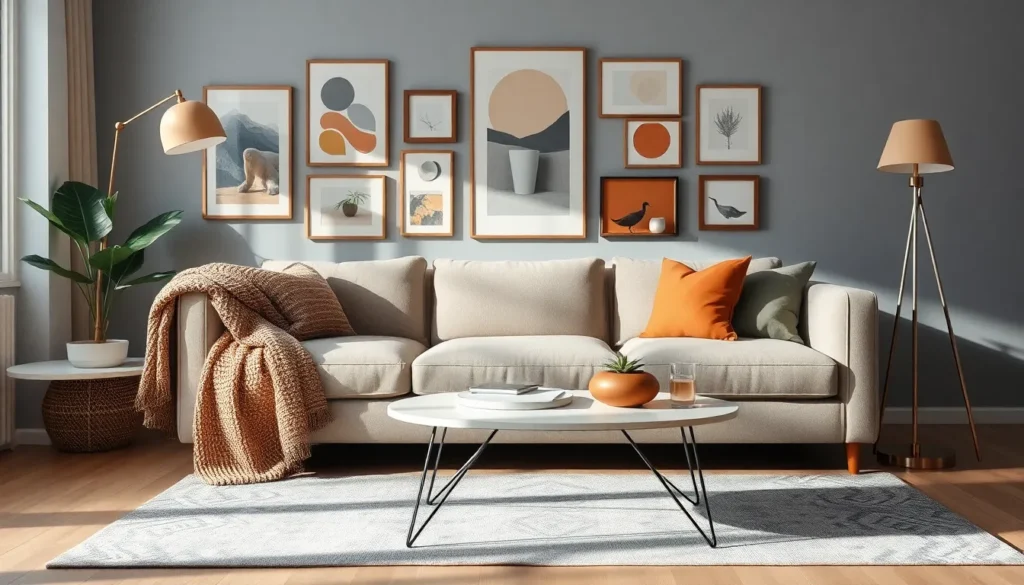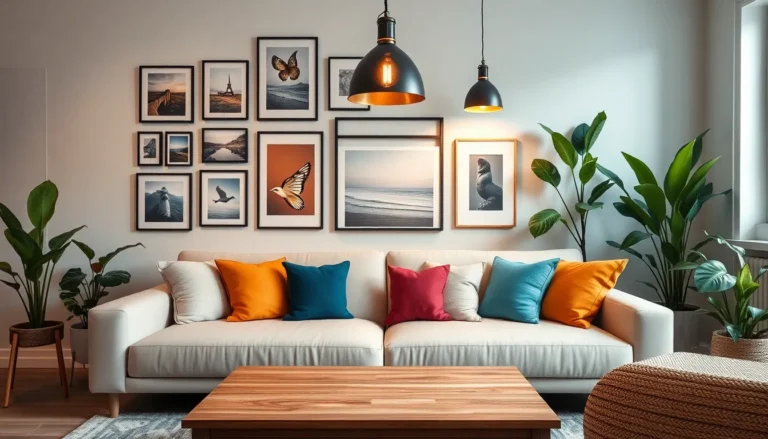Ever walked into a friend’s home and thought, “Wow, how did they do that?” You might picture them scouring high-end stores for priceless decor, but let’s face it: decorating isn’t just for the wealthy or design-savvy. Anyone can create a stunning space with the right decorating tips and tricks. From understanding your space to the art of color palettes, this guide will reveal how to transform any room into a cozy masterpiece without very costly. Ready to become the next interior design guru among your friends? Let’s immerse.
Table of Contents
ToggleUnderstanding Your Space

Assessing Room Size and Layout
Before diving headfirst into decor decisions, assess your space. Knowing the dimensions of each room helps in making informed choices. A large living room doesn’t call for the same decor strategy as a snug bedroom. Begin by measuring wall lengths, ceiling heights, and even doorways. This information can steer you towards appropriate furniture sizes and layouts. If the space feels cramped, consider multi-functional furniture that’s both stylish and practical.
Identifying the Purpose of Each Room
What activities will your space accommodate? A dining room that doubles as a home office should have a different ambiance than a dedicated entertainment area. Identifying each room’s primary function will help narrow down types of decor and arrangements, ensuring every corner serves its purpose without looking cluttered.
Developing a Color Palette
Choosing Colors That Complement Your Space
A color palette sets the mood of a room. Neutral tones can provide a calm backdrop, while vibrant hues can invigorate a space. When choosing colors, think about the overall vibe you want to convey. For instance, soft blues and greens promote relaxation, while reds and yellows energize. Try picking a base color and select two to three complementary shades to maintain harmony across the room.
Using Color Psychology in Decorating
Color isn’t just about aesthetics: it can influence emotions and behaviors. Blue can create a sense of calm, while warmer colors can spark creativity. So, consider the psychological impact of colors as you select your palette. If you want to foster interaction in a living room, opt for inviting shades like terracotta or mustard.
Incorporating Texture and Patterns
Combining Different Textures for Depth
Texture adds interest and depth to your decor. Think about a mix of materials: soft cushions, sleek glass accents, and rugged wood surfaces all create dynamic contrasts. Layering different textures brings a tactile element to your space, making it feel lively and inviting. Try adding a plush throw on a leather sofa or a knotted rug underfoot.
Mixing Patterns Without Clashing
Pattern mixing is an art form in itself. To avoid visual chaos, choose a primary pattern that ties the room together and supplement it with smaller, contrasting patterns. For example, pair a large floral print with subtle striped accents. Keep the color scheme consistent to achieve a cohesive look that feels intentional.
Furniture Arrangement Strategies
Using Focal Points to Guide Arrangement
Every room needs a focal point, whether it’s a fireplace, artwork, or a beautiful piece of furniture. Arrange furniture around that focal point to create a natural flow. For example, a cozy sofa can be positioned to face a stunning landscape view or a statement piece of art, drawing attention and conversation.
Creating Flow and Functionality
After determining your focal point, consider the pathways in the room. Ensure there’s enough space to walk around comfortably without bumping into furniture. A well-placed coffee table can serve as a central hub for gatherings while also functional for daily use.
Decorative Accessories and Personal Touches
Selecting Art and Wall Decor
No decor is complete without personal touches, such as art and wall decor. Choose pieces that resonate with you and reflect your personality. From bold acrylic paintings to elegant black-and-white photography, options abound. Arranging art in a gallery style can create an engaging visual statement.
Choosing Rugs and Curtains to Enhance Design
Rugs and curtains play pivotal roles in tying a room’s decor together. A well-chosen rug can define areas within larger spaces and add warmth. Curtains frame windows beautifully and control light. Opt for patterns and colors that echo your overall decor style, ensuring they enhance rather than distract.
Lighting for Mood and Style
Layering Light Sources for Ambiance
Lighting is the unsung hero of decor. Layering light sources, ambient, task, and accent, can dramatically transform a room’s atmosphere. Pendant lights create drama, while table lamps provide warmth. Consider dimmer switches for versatility, allowing you to adjust the mood depending on the time of day or occasion.
Utilizing Natural and Artificial Light Effectively
Maximize the advantages of natural light. Heavy curtains may block valuable sunlight, so opt for sheer fabrics that let light filter through. Balance natural light with strategic artificial light placement to avoid dark corners, enhancing the sense of space.






